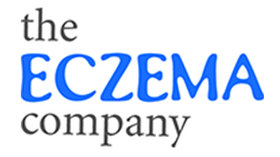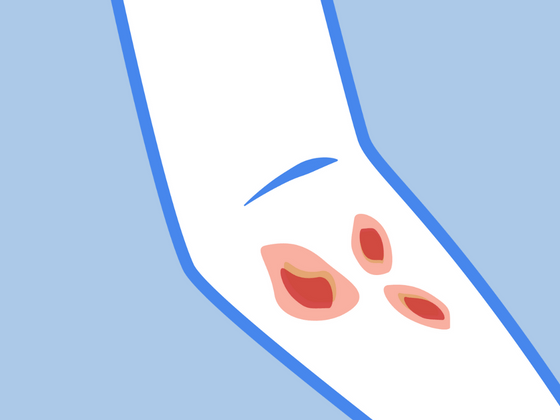Eczema is a chronic skin condition characterized by dryness, redness, and rough patches of skin. It affects between 10-20% of the population. But what’s the difference between eczema and keratosis?
In this post, we explore everything you need to know about eczema and keratosis, including:
- Why is keratosis pilaris referred to as chicken skin?
- How are eczema and keratosis pilaris similar?
- The best natural ways to treat your sensitive skin
What is Keratosis Pilaris?
First of all, let’s dive into what keratosis pilaris is. Like eczema, it’s a common skin condition. Its prime characteristic is small, raised bumps that resemble pimples and may be red, pink, or brown. Because of their goose-bump-like appearance, keratosis pilaris is often referred to as ‘chicken skin.’ The condition typically develops on the arms, bottom, thighs, and back, but you may also develop bumps on the face. The bumps are caused by excess keratin production or a build-up of dead skin cells trapped in their hair follicles. This is why it can be challenging to differentiate between follicular eczema vs. keratosis pilaris. It’s more likely to affect children and teens – particularly around puberty – and women. Those with pre-existing conditions of eczema, allergies, or asthma are also more likely to develop keratosis pilaris.
What is Eczema?
Eczema is an inflammatory skin condition associated with a damaged skin barrier that has trouble retaining moisture. For this reason, eczema is associated with dry skin, which can lead to intense itching. Other symptoms include a red rash, scaly skin, and sometimes fluid-filled blisters. These symptoms can range from mild to severe and vary from person to person. The exact cause of eczema is unknown, but it’s believed to be linked to genetic and environmental factors. Some common triggers include sweat, stress, pet fur, certain foods, fabrics like polyester and latex, ingredients in beauty products, and extreme weather conditions. Although it often develops during childhood, it can affect people at any age.
Keratosis Pilaris vs. Eczema
In many ways, keratosis pilaris and eczema are similar. Neither is contagious, and neither condition has a cure. However, there are ways to improve the skin’s appearance and manage uncomfortable symptoms. Both also tend to get worse during pregnancy or during the winter months when the air is colder and dryer. A critical difference is that keratosis pilaris is generally relatively painless compared to eczema.
Natural Ways to Treat Your Skin
As we mentioned, there is no cure for either condition, but it is possible to soothe symptoms to enjoy a more comfortable life. Here are some of our top suggestions:
Moisturize
Keeping your skin hydrated by applying a natural moisturizer can help keep dryness and itchiness at bay. We love this Organic Manuka Skin Soothing Cream because it contains only the most natural ingredients of the highest quality that are nourishing and ultra-moisturizing. Use it to calm dry and itchy rashes, as well as eczema, keratosis pilaris, and rosacea-like redness.
Exfoliate
Gently exfoliating your skin is a great way to improve your skin’s appearance. Exfoliating the skin helps remove dry and dead skin cells that can otherwise block hair follicles' opening or exacerbate eczema symptoms. Just remember to do so gently!
Take a Lukewarm Bath
As tempting as a hot bath might sound, hot water can exacerbate dry skin and worsen matters. So instead, we recommend taking a bath with lukewarm water for no more than 10 minutes. To treat yourself to an at-home spa, try this Conqueror Oatmeal Bath for Eczema. Made with wholesome ingredients, it helps fight skin sensitivity and diminishes visible redness.
Want to learn more about eczema? Check out How to Treat Eczema White Spots.








